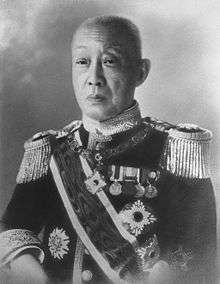Japanese general election, 1912
| |||||||||||||||||||||||||||||||
All 381 seats to the House of Representatives 191 seats were needed for a majority | |||||||||||||||||||||||||||||||
| |||||||||||||||||||||||||||||||
| |||||||||||||||||||||||||||||||
 |
| This article is part of a series on the politics and government of Japan |
|
Related topics |
|
|
General elections were held in Japan on 15 May 1912.[1] The result was a victory for the Rikken Seiyūkai party, which won 209 of the 381 seats.
Electoral system
The 381 members of the House of Representatives were elected in 51 multi-member constituencies based on prefectures and cities. Voting was restricted to men aged over 25 who paid at least 10 yen a year in direct taxation.[2]
Results
| Party | Votes | % | Seats | +/– |
|---|---|---|---|---|
| Rikken Seiyūkai | 689,613 | 51.5 | 209 | +22 |
| Rikken Kokumintō | 381,465 | 28.5 | 95 | +25 |
| Chūō Club | 113,834 | 8.5 | 31 | New |
| Others | 153,593 | 11.5 | 46 | –18 |
| Invalid/blank votes | 10,672 | – | – | – |
| Total | 1,349,177 | 100 | 381 | +2 |
| Registered voters/turnout | 1,506,143 | 89.6 | – | – |
| Source: Mackie & Rose, Voice Japan | ||||
References
This article is issued from
Wikipedia.
The text is licensed under Creative Commons - Attribution - Sharealike.
Additional terms may apply for the media files.

